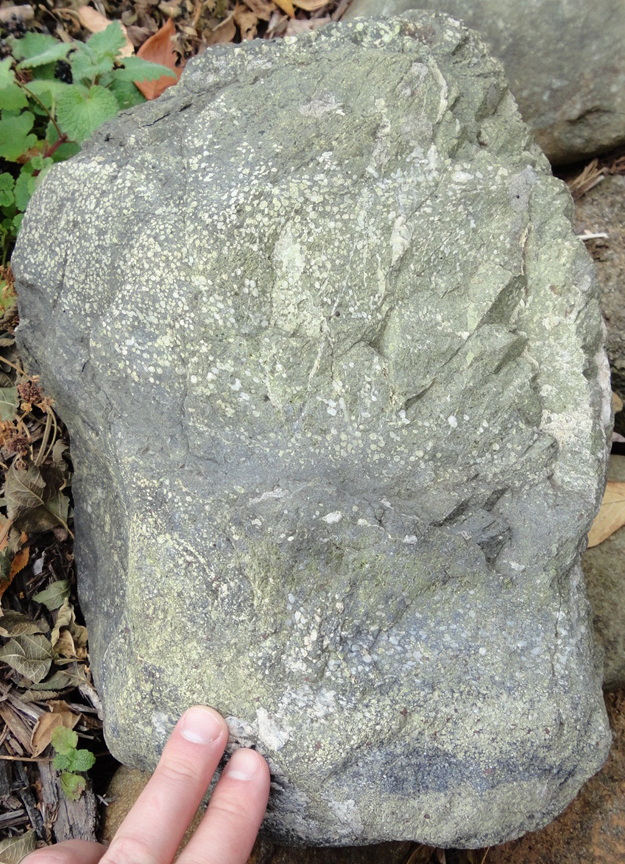I saw this boulder lining a garden this past weekend down in Nellysford, Virginia, in the scenic valley of the Rockfish River draining the eastern slope of the Blue Ridge.

It’s a piece of the Neoproterozoic-aged Catoctin Formation, a series of lava flows and associated rocks that erupted on the breakup of the early supercontinent Rodinia and the subsequent opening of the Iapetus Ocean basin. The white “polka dots” are amygdules – volcanic degassing structures called vesicles that have been filled in with white-colored mineral deposits.
What struck me about this boulder was the distinctive amygdule-rich horizons, separated by amygdule-poor horizons. I guess these might reflect flow patterns in the ancient lava?

0 thoughts on “Vesicle-rich layering in Catoctin Formation”